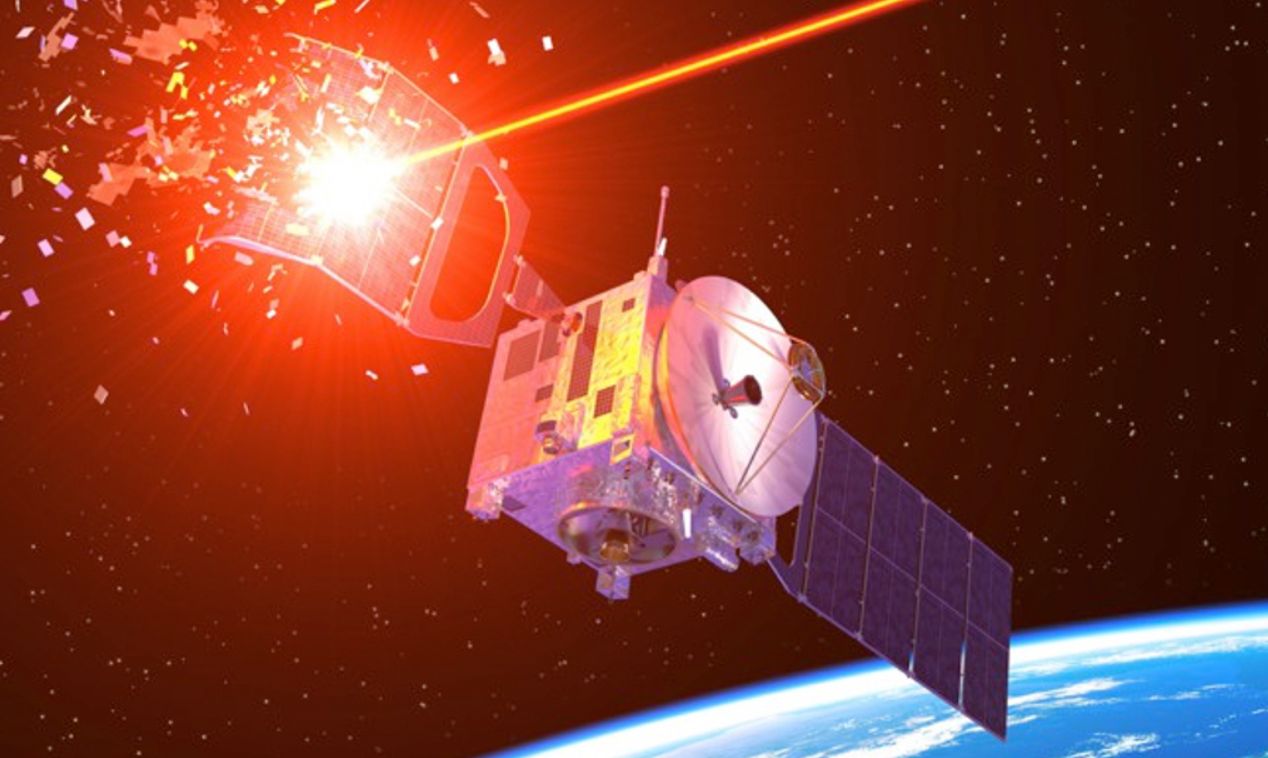On May 8, a mysterious reusable Chinese spacecraft returned to Earth after staying in orbit for 276 days. On the face of it, it seems like a mere technological development. But, from a military perspective, it has far-reaching consequences.
Ukraine War: Russia ‘Shot Down’ Many Storm Shadow Cruise Missiles In Syria; Expert Says Our BUK & TOR ‘Detected & Downed’ Them
A highly maneuverable spacecraft like this could be used to “surveil, disrupt and outright attack an opponent’s space-based assets” or conversely can “retrieve or otherwise interact with friendly ones.”
Private space services company LeoLabs revealed on its Twitter handle that the Chinese reusable space vehicle “docked with or captured a separate object on multiple occasions” during the orbit.
The Chinese state-run China Aerospace Science and Technology Corporation has not provided many details about its time in orbit.
Highly maneuverable reusable space vehicles that can manipulate other objects in orbit could be used for research and development. But they can also act as a weapon and become “satellite killers” that can attack other objects in space.
The ability of the Chinese spaceplane to capture other objects indicates the presence of “robotic arms” that could be used to damage or destroy an enemy satellite. The other means that can be used to disrupt the enemy space-based platforms are electronic warfare jamming or a high-powered microwave beam.
The “satellite killer” can also smash itself into the target or lob projectiles at the target space objects, a capability Russia has been actively testing.
The less dangerous objective of these satellites could be to shadow and gather intelligence on other space objects. The other innocuous application of this technology is to inspect, refuel, and service other space assets.
Space: Battleground Of Future Conflict Between US & China
Space will be an important battleground in case of a conflict between the US and China or Russia. With the US military heavily relying on its satellites for intelligence gathering, navigation and weapon guidance, and communication and data sharing, damage to their satellite can have a blinding effect.

The US Space Force chief of space operations, General B Chance Saltzman, in congressional testimony on March 14, 2023, said that China is the “most immediate threat” as it continues to weaponize its space technology.
The most threatening Chinese technologies, he said, are ground-based lasers designed to disrupt and degrade satellite sensors, electronic warfare jammers targeting GPS and communications satellites, and anti-satellite missiles.
In his testimony to the Senate Armed Services Committee’s strategic forces subcommittee, Saltzman said: “China is likely pursuing anti-satellite systems able to destroy satellites in geosynchronous orbit.” The geosynchronous orbit is a special position high above the Earth that allows an object to keep pace with its rotation.
It is useful for satellites tasked with monitoring missions, tracking the weather, and other remote sensing tasks and for communication satellites.
“They (Chinese) are testing on-orbit satellite systems which could be weaponized as they have already shown the capability to physically control and move other satellites,” Saltzman added.
When asked to elaborate on the scenarios that can play out during a space conflict with a rival power, Saltzman said: “If they can blind us, if they can interfere with those capabilities, or God forbid, destroy them completely. They know that will diminish our advantages.” He added, “I can see interfering, I can see blinding, I can see some of those gray area kinds of attacks on our capabilities to try and put us behind the eight ball.”
He said that China has “grappling satellites” that could pull a US spacecraft out of orbit. This is because the US relies on “less than maneuverable older legacy satellites.” That is why the recently constituted US Space Force plan to transition from its current geostationary satellites to a “proliferated network of smaller satellites.”
The genesis of the anti-satellite arms race was in 2007 when China struck one of its own weather satellites with a missile. Fast forward to 2022, a Chinese Shijian-21 spacecraft docked with a defunct Beidou-2 navigation satellite and towed it into a graveyard orbit above the geostationary orbit.
In 2023, China is well on the path to becoming a global leader in space technology. The credit for its success goes to the blurring of lines between the military and civil endeavors of the Chinese government.
Space is at the center of the Chinese Military Doctrine and Strategy. The Commander of the US Space Command, General James Dickinson, told the Senate Armed Services Committee in 2022 that the goal of the Chinese military is to “blind and deafen” the enemy by crippling reconnaissance, communications, navigation, and early warning satellites. General Dickinson said the Chinese spaceplane “could carry a payload designed to disable or capture a satellite while in orbit.”
The US Space Force has been contending that the US satellites are at the receiving end of the Chinese and Russian attacks through non-kinetic means, including lasers, radio-frequency jammers, and cyber-attacks, almost daily. While the Chinese reusable Space Plane is shrouded in secrecy, its sketchy details confirm the growing Chinese anti-satellite capabilities.
The US also has two X-37B mini space shuttles, presented as broad analogs to their Chinese counterpart.
- Ritu Sharma has been a journalist for over a decade, writing on defense, foreign affairs, and nuclear technology.
- She can be reached at ritu.sharma (at) mail.com